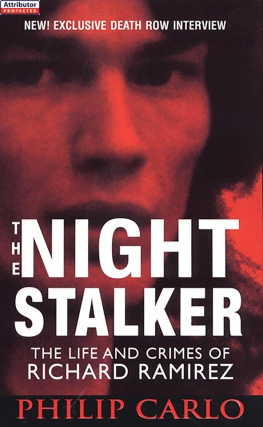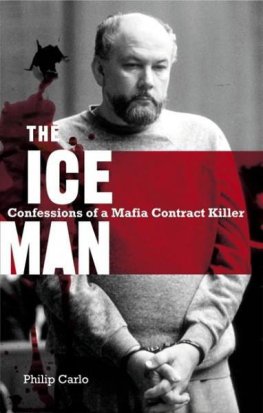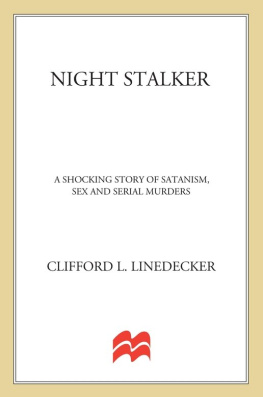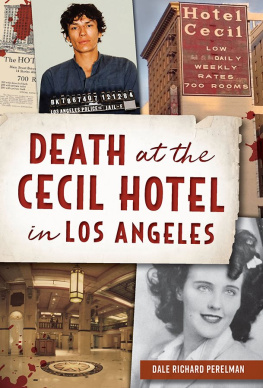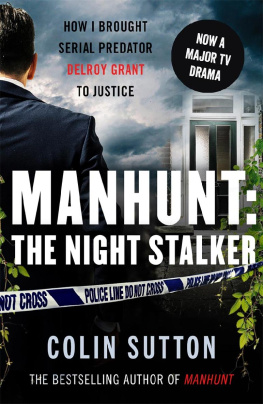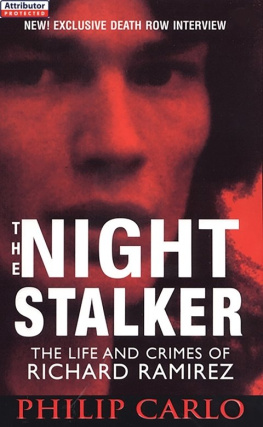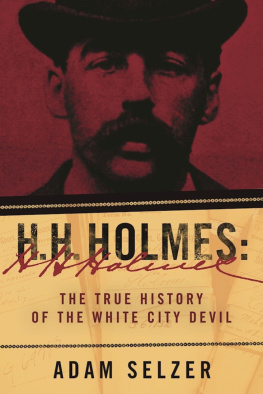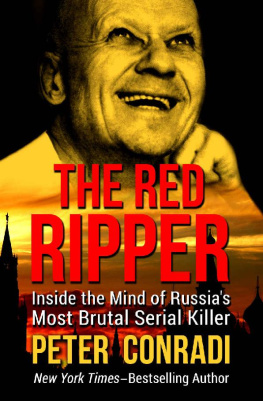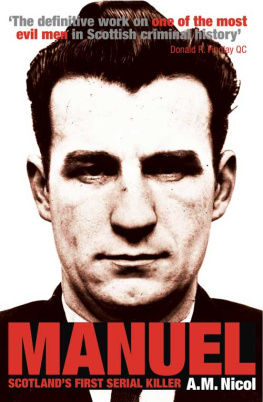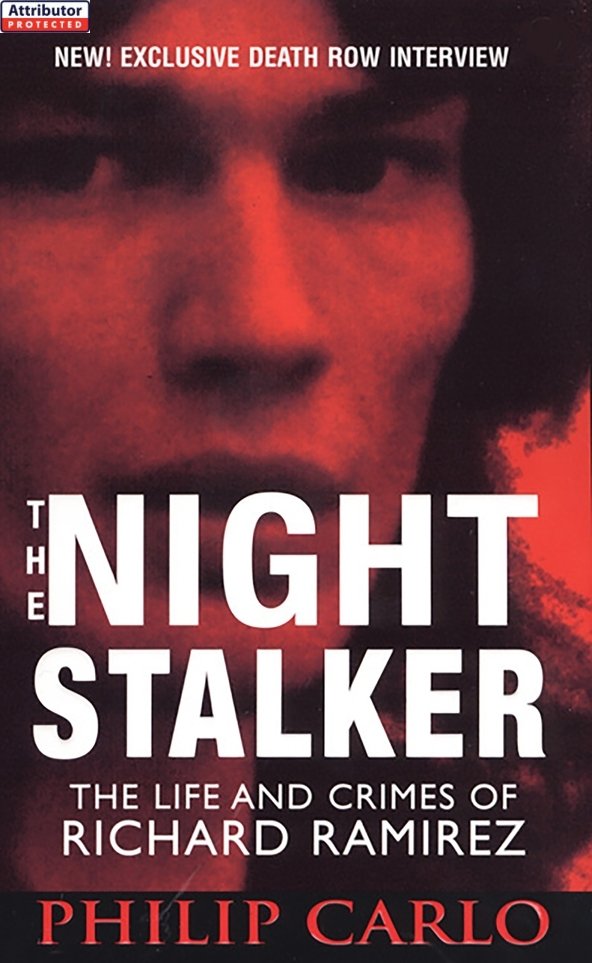ACKNOWLEDGMENTS
I wish to extend my gratitude to the following individuals, without whose kind support this book would not have been possible:
LASD Homicide detectives Sgt. Frank Salerno and Gil Carrillo, Capt. Ken Roe, Dr. Dale Griffis, Dr. Richard Ash, Jeffrey Hafer, Mary Meagher, Louis Carlo, Dante and Antonina Carlo, Doreen and Joseph Mannanice, Robert and Maxine Ganer, Beth McDermit, J. McNally, Ivelisse Reyes, Marcos Quinones at the NYPD Police Academy, Anthony Danza, Danny Aiello, Paul Herman, Brian Hamill, Tony Sirico, Chuck Zito, T. Conforte, Philip Monaco, Patrick Laudisina, Michael Kostrewa, and the Ramirez family; also, my agent, Frank Weimann. And, of course, my editor, Paul Dinas, and all the terrific people at Kensington Publishing, especially Karen Haas, Laura Shatzkin, and Diane Wright.
I also wish to thank Michaela Hamilton at Kensington Publishing for encouraging me to write the update for this tenth-anniversary edition of our book.
Special Update of the Tenth-Anniversary Edition
O ften people ask me why I wrote The Night Stalker, Why the hell would you want all that negative crap in your head? This is a long, involved story, but to make it short: in 1992, I was intent on writing a novel about serial murder that truly would portray what goes on inside a serial killers mind before, during, and after a murder. I planned to simply lay out in a compelling, suspenseful way the building blocks that make a serial murderer.
I am a staunch believer in doing research, getting out in the world and seeing for myself whats going on and talking personally to the players who know the truth. Toward that end, I began contacting convicted killers on different death rows around the country, intent upon shining light on this little-known, dark phenomenonamongst whom were John Gacy and Ted Bundy. Some were interested in talking with me, others werent; though, little by little, I began piecing together the hard-core realities, the building blocks, if you will, of what serial murder is about.
My friend and agent, Matt Bialer, suggested I contact Richard Ramirezthe notorious Night Stalker, who, in 1985, held the entire state of California in a grip of fear unparalleled in the annals of crime history. I am a born-and-bred New Yorker and didnt live in Los Angeles when the Stalker was, at will, entering peoples homes in the middle of the night, tearing, ripping, beating, and shooting them to death, but I did remember how incredibly brutal his crimes were, and that he was a Satanist, which I found particularly interesting and compelling. I wrote Ramirez; he responded. We corresponded by mail for a few months. I invited him to call collect, which he did.
Quite to my surprise, I found him to be open and forthright, and, oddly enough, he possessed a keen sense of humor. He agreed to meet with me and I was soon on a plane to San Francisco and met Richard at the San Francisco County Jail, where he was being held because of crimes he was charged with in San Franciscothe rape of Barbara Pan and murder of her sixty-two-year-old husband, Peter Pan. I had press credentials and was able to meet with Richard, one-on-one, in a small conference room.
I arrived first. It took about twenty minutes for him to be brought down. When he got there, I was surprised at how big and fluid-moving he was, catlike, and his hands were enormousthe largest ones Id ever seen. These were, I knew, hands that had done terrible, unspeakable things. They were like two malevolent vultures fluttering about before him as he spoke. I had seen crime scene photos of the Night Stalkers victims: heads had been nearly severed; eyes cut out; some victims were beaten so badly they were not recognizable as the people they once had been.
We talked for a few hours. Richard agreed to tell me the truth. I returned to New York and wrote a proposal for the book, sold it to Kensington Publishing, and I was soon back on a plane to California.
Richard, however, had been moved to San Quentins death row and was only able to have visits through Plexiglas. Friends of mine in the NYPD Police Academywhere I had lectured numerous timeswrote a letter to the warden of the prison on my behalf and thus I was able to sit alone in a small room with Richard and pick his brain. Altogether, I spent three weeks with him, from 8 A.M . to 2 P.M ., every day. I made it a point never to judge Richard or talk down to him. I treated him like just another guy and, like that, I was able to get inside his head with a flashlight and see what was going on. I found him to be surprisingly bright and well read; he clearly had a deep, reflective, introspective side, which, in my mind, made him all the more ... interesting.
Here, nowfor the first timeis part of my death row interview with Richard Munoz Ramirez, Californias dreadful/infamous Night Stalker.
Carlo: Lets give it a couple seconds for the thing to start. Okay, its February 8, about 9 A.M . Im inside of San Quentin Prisons death row with Richard Ramirez. So, Richard, well be discussing some topics; you were just talking about death and what it means to societywould you continue?
Ramirez: Uh ... now Im freezing up! (laughter)
Carlo: So you find death funny?
Ramirez: No, I just think society is fascinated with death. Instead of giving it just a little part in this project youre doing ... you should devote enough space to it because
Carlo: What about How We Die whats that about? That book How We Die you told me about....
Ramirez: It talks about how people take death in ... today, todays society. Long ago, it was taken as a spiritual thing because birth and death are two very major events, not only in the person being born and also dying, but in the people around them and the legacy that we leave behind. In todays society, its more of the scientific and medical aspects that are most talked about in death. And in this book, it tells about how different people die and different ways of dying....
Carlo: Different cultures?
Ramirez: Different cultures, I believe. Ive read reviews on it; I havent read the book myself. Ive read reviews and it says there is such a thing as a death rattle; there is such a thing and it is a spasm of the voice box.
Carlo: You mean its like the last breath?
Ramirez: Yes. (Tape shuts off.)
Carlo: About this death rattleIve read about it a lot myself but Ive never heard it. Have you heard it?
Ramirez: (Gets up and starts to walk out.)
Carlo: Hey, cmon back!
Ramirez: No, I havent heard it!
Carlo: Describe
Ramirez: What I think it would sound like?
Carlo: Yeah man.
Ramirez: Its the last ... breathing out. Its one last breath out, I dont think its one last breath in....
Carlo: The last breath out.
Ramirez: Right.
Carlo: And ... what does it sound like?
Ramirez: I assume, I suppose, itwhoever is witnessing such a thingit is sort of like the spirit leaving the body at the same moment this breath is given. But ... uh ... okay; some people actually fight, cling to life, some people even ask permission from their loved ones if ... to die. See, because they dont want to leave their loved ones.
Carlo: What does the rattle sound like, and why? Its the last breath going out but does it affect the voice box?
Ramirez: It is a spasm of the voice box.
Carlo: Its a spasm of the voice box ... I see.
Ramirez: Yes, I would assume it doesnt sound like any breath we take during our lifetimes. It is sort of like when a baby is born and he is slapped on the bottom, he takes a deep breath in. These things are to me mystical and spiritual, in that we dont experience them every day. When these things happen, we take notice. We have to. I dont think its possible to not detect such things unless youre really stupid.

